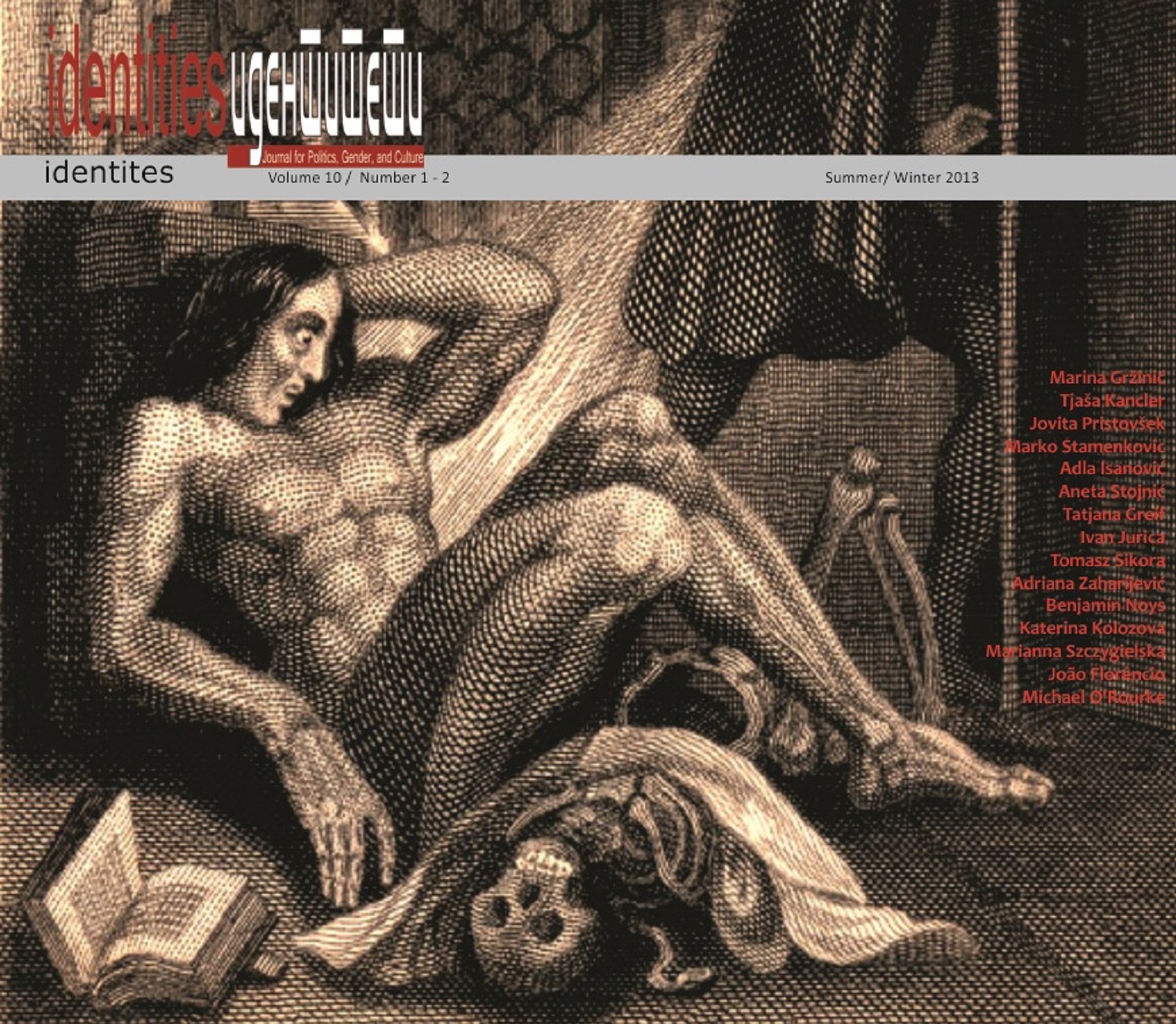Tongue Untied, Tongue with Tongue. Mining the Binary Matrix
DOI:
https://doi.org/10.51151/identities.v10i1-2.273Keywords:
language, gender, sexuality, transfeminism, protestsAbstract
Although language allows boundless freedom, we are at the same time confined within a linguistic structure that first demands that we are assigned a sex and a gender and consequently restricts us to two existing categories; that is, to the categories of male or female. Gender in language therefore forces every individual to mark in its speech to which gender category it belongs. If we are neither women nor men, then how can we understand our existence through language? What is the relation between the binary system of gender (man/woman) and language? How is the relationship between body, language, subjectivity and politics articulated nowadays? In addition, how can we be constituted as political subjects in spite of our non-defining identity? This article considers the questions of deconstruction of the binary man/woman system in relation to the further, possible and common struggle against global capitalism, coloniality and heteropatriarchy.
Author(s): Tjaša Kancler
Title (English): Tongue Untied, Tongue with Tongue. Mining the Binary Matrix
Journal Reference: Identities: Journal for Politics, Gender and Culture, Vol. 10, No. 1-2 (Summer-Winter 2013)
Publisher: Institute of Social Sciences and Humanities – Skopje
Page Range: 14-19
Page Count: 6
Citation (English): Tjaša Kancler, “Tongue Untied, Tongue with Tongue. Mining the Binary Matrix,” Identities: Journal for Politics, Gender and Culture, Vol. 10, No. 1-2 (Summer-Winter 2013): 14-19.

Downloads
Published
How to Cite
License
Identities is published under the following license: Creative Commons Attribution-NonCommercial-NoDerivatives 4.0 International (CC BY-NC-ND 4.0). Under this license, users of our content must give appropriate credit to authors and source as well as indicate if changes were made, cannot be used for commercial purposes, and, in the instance that it is built upon or transformed, may not be distributed. For Identities, the copyrights allow the audience to download, reprint, quote in length and/or copy articles published by Identities so long as the authors and source are cited. For more information on our license, see the following: https://creativecommons.org/licenses/by-nc-nd/4.0.








